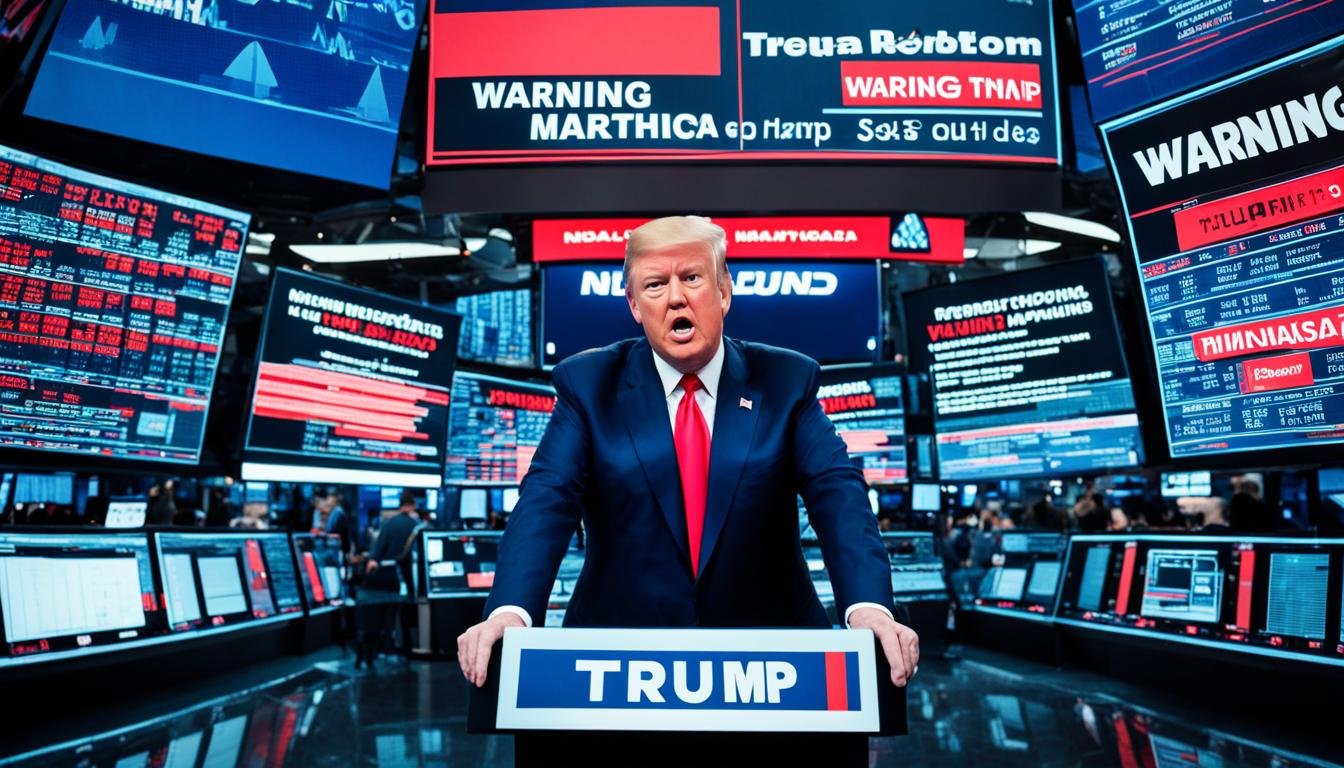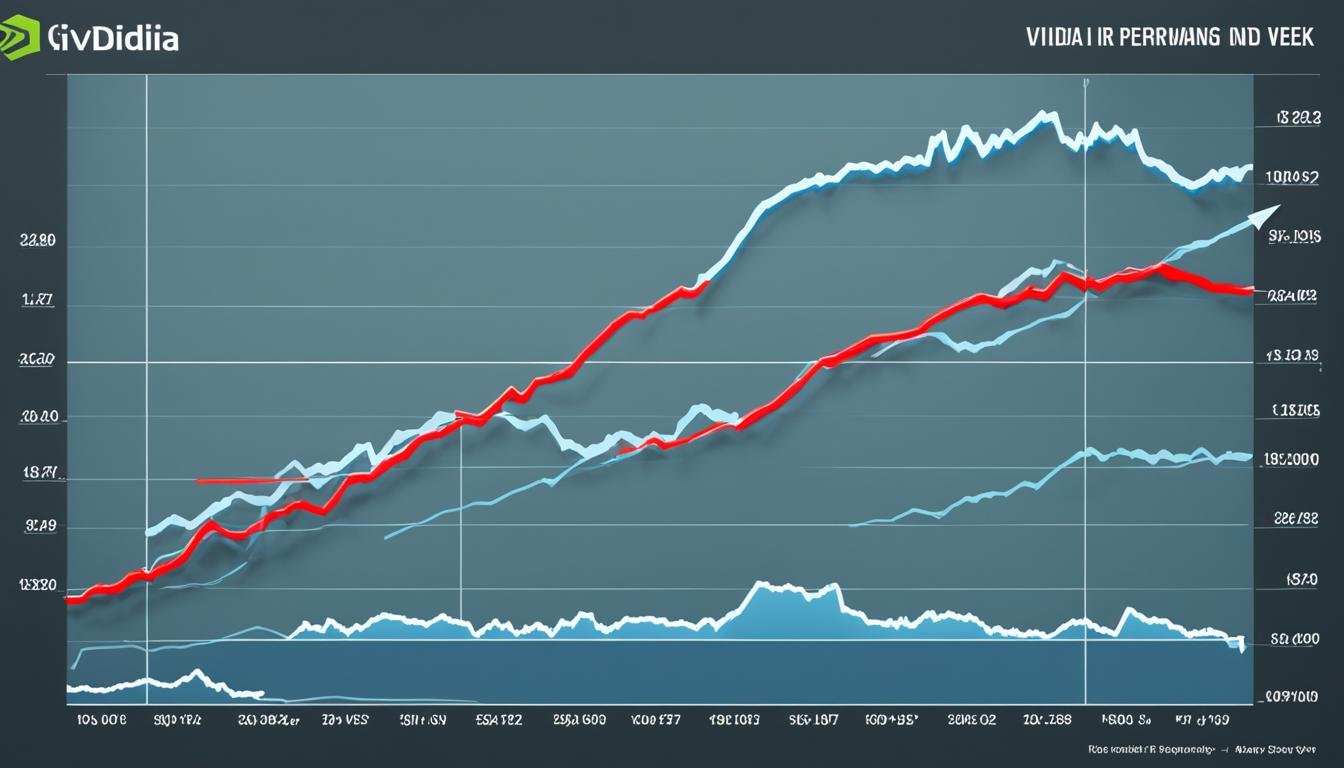Trump Media, the news organization founded by former President Donald Trump, has issued a warning to Nasdaq regarding suspected market manipulation. The company is deeply concerned about illegal short selling of its shares and is determined to protect its retail investors. Trump Media CEO, Devin Nunes, has called out President Joe Biden for mentioning the company’s stock price in a recent speech, suggesting that it may be a contributing factor to the decline in the stock price.
In light of these concerns, Trump Media’s warning to Nasdaq serves as an alert to the stock market. The company is committed to taking all necessary steps to uncover any market manipulation and ensure a fair and transparent trading environment for its investors.
The issue of market manipulation is one that has far-reaching implications, not only for Trump Media but for the broader financial ecosystem. It is crucial that investors remain vigilant and that regulators closely monitor suspicious activities in the market. Trump Media’s proactive stance in addressing this issue emphasizes the significance of maintaining trust and integrity in the financial industry.
As investigations into suspected market manipulation continue, it is essential for authorities to thoroughly examine the evidence and take appropriate action against any wrongdoing. The reputation of the stock market and the confidence of investors rely on a fair and efficient trading system.
The Case for Copper in the Data Center Industry
Copper plays a crucial role in the data center industry, particularly with the rising demand for AI applications. As technology continues to advance, data centers require a robust and reliable infrastructure to support the growing data processing needs. Copper, with its excellent conductivity and durability, is an ideal material for various applications within data centers.
The Growing Demand for Copper
J.P. Morgan projects that the global power demand of data centers may lead to an increased need for 2.6 million tons of copper by 2030. This surge in demand is fueled by the exponential growth of AI applications, which heavily rely on high-speed data transmission and stable connections. Copper’s superior conductivity allows for efficient data transfer, making it an essential component in the data center industry.
“Copper is the lifeblood of data centers, enabling seamless communication and data flow that powers the AI-driven world we live in.” – Data Center Magazine
Furthermore, the transition to clean energy and the rise of electric vehicles drive the need for more copper. The International Energy Agency predicts that the share of copper demand for clean energy technologies will increase from 24% in 2020 to 32% in 2040. Copper is essential for renewable energy infrastructure, electric vehicle charging stations, and energy-efficient power transmission.
Challenges in Copper Mining
Despite the increasing demand, acquiring new copper mining permits is becoming more challenging due to strict environmental legislation and government interference. The mining industry faces obstacles in obtaining permits to establish new mines and expand existing operations. These hurdles, coupled with the limited availability of copper reserves, pose a significant challenge in meeting the growing demand for copper.
However, innovative recycling processes and advancements in mining technologies offer potential solutions to mitigate the supply-demand gap. Copper recycling reduces the reliance on new mining and is a sustainable approach towards meeting the demand for copper in various industries.
In conclusion, the data center industry relies heavily on copper for its efficiency and reliability in supporting AI applications. The increasing demand for clean energy and electric vehicles further emphasizes the importance of copper. However, the industry must navigate challenges in copper mining and explore sustainable alternatives to ensure a continuous supply of this vital resource.
Freeport-McMoRan’s Position in the Copper Market

When it comes to benefiting from the increasing demand for copper, one company stands out – Freeport-McMoRan. As a leading copper miner, Freeport-McMoRan has seen a significant increase in its stock price this year, a trend fueled in part by the rising price of copper.
In fact, Freeport-McMoRan estimates that by 2025/2026, its earnings before interest, taxes, depreciation, and amortization (EBITDA) could reach an impressive $10 billion at a price of $4 per pound for copper.
Not only is Freeport-McMoRan positioned to take advantage of current copper prices, but the company also has plans to increase its copper production. It has identified several projects that could result in additional production, further solidifying its position in the market.
For investors looking to tap into the potential of the copper market, Freeport-McMoRan offers an attractive opportunity. With its strong position, the company provides exposure to the increasing demand for copper and the potential for significant returns.
Benefits of Investing in Freeport-McMoRan:
- Capitalizing on the rising price of copper
- Potential for significant earnings growth
- Plans to expand copper production
- Positioned to benefit from the increasing demand for copper
If you’re considering entering the copper market, Freeport-McMoRan is certainly worth exploring as a potential investment. With its strong position and promising future prospects, it has the potential to deliver returns in line with the growing demand for copper.
Explore a wealth of financial knowledge and insights on comprehensive financial education, designed to empower you with the essential tools for making informed financial decisions.
Trump Media CEO’s Warning to Nasdaq

Trump Media CEO, Devin Nunes, has expressed concern about potential illegal short selling of the company’s shares and its impact on the stock price. In a letter submitted to the Securities and Exchange Commission, Nunes mentioned that Trump Media had appeared on Nasdaq’s “Reg SHO threshold list.” While this list could indicate illegal trading activity, the SEC clarifies that its inclusion does not necessarily imply wrongdoing.
“I firmly believe that the decline in Trump Media’s stock price may be a result of market manipulation,” Nunes stated. “We have observed suspicious trading patterns and unauthorized short selling that warrant further investigation.”
Trump Media aims to protect its retail investors and ensure fair trading practices. The company remains vigilant in its efforts to identify and address any potential market manipulation.
The Reg SHO Threshold List
According to Nasdaq’s website, the Reg SHO threshold list is a daily record of stocks with a significant number of failed trades, indicating potential naked short selling activity. Naked short selling involves selling shares when the seller does not actually possess them, posing potential risks to investors and market stability. However, the appearance of a stock on this list does not immediately indicate illegal trading or manipulation.
Trump Media’s Allegations
Nunes raises concerns about the potential manipulation of Trump Media’s stock price through short selling. The company believes that unauthorized short selling activities may be driving down the stock price, harming the interests of its investors. By reporting these suspicions to the SEC, Trump Media aims to shed light on potential market manipulation and ensure regulatory scrutiny of the trading activities surrounding its shares.
| Key Points | Details |
|---|
| Concerns | Trump Media CEO, Devin Nunes, warns of potential market manipulation through illegal short selling |
| Reg SHO Threshold List | Trump Media appeared on Nasdaq’s list, indicating a significant number of failed trades |
| Company Allegations | Trump Media suspects unauthorized short selling activities contributing to the decline in stock price |
To address these concerns, regulatory bodies like the SEC will investigate the allegations made by Trump Media and assess the validity of potential market manipulation.
Biden’s Mention of Trump Media’s Stock Price
During a recent speech, President Joe Biden made a comment that directly referenced the stock price of Trump Media, drawing immediate attention from the company’s CEO, Devin Nunes. In his speech, President Biden took the opportunity to criticize former President Donald Trump and specifically mentioned the decline in Trump Media’s stock price. This mention by the President has raised eyebrows and sparked a discussion about potential market manipulation.
“Market manipulation can take many forms, and any remarks made by influential individuals, such as the President, regarding a company’s stock price can certainly be cause for concern,” said CEO Devin Nunes.
However, it is crucial to note that Biden’s comment alone is not concrete evidence of market manipulation. It is natural for politicians to comment on current events and market trends, and their statements may impact stock prices. While Nunes finds the timing and nature of the remark unusual, further investigation is needed to determine if any market manipulation has occurred.
Impact on Investor Sentiment
The market is highly sensitive to the words and actions of political leaders, and a comment from the President can significantly influence investor sentiment. As news of President Biden’s mention of Trump Media’s stock price spread, it is likely to generate discussions and speculation among investors. This increased scrutiny can lead to heightened volatility in the market, as traders react to the potential implications of market manipulation.
To get a better understanding of the situation, market participants will closely monitor any follow-up statements from President Biden, as well as the response from Trump Media and other market regulators.
| Key Points | Implications |
|---|
| President Biden mentioned Trump Media’s stock price during a recent speech. | This comment by the President has raised concerns and sparked discussions about potential market manipulation. |
| Trump Media CEO, Devin Nunes, found the timing and nature of the mention unusual. | Further investigation is necessary to determine if any market manipulation has taken place. |
| Investor sentiment may be impacted by the President’s comment. | The market could experience increased volatility as traders react to the potential implications. |
Concerns About Naked Short Selling and Market Manipulation
Trump Media CEO, Devin Nunes, has voiced concerns about the practice of “naked” short selling and its potential implications for market manipulation. Naked short selling involves selling shares without borrowing or arranging to borrow them, with the expectation that the stock price will decline. This controversial technique has raised alarms among market participants, including Nunes and other industry experts.
Nunes recently issued a warning to the CEO of Nasdaq, expressing his apprehensions about illegal naked short selling and its potential role in the recent decline of Trump Media’s stock price. In the letter filed with the Securities and Exchange Commission, he highlighted the possibility of market manipulation impacting Trump Media’s shares through this practice.
It is important to note, however, that the Securities and Exchange Commission (SEC) defines naked short selling as a violation of securities laws only when it is specifically intended to manipulate the market. The SEC has implemented certain regulations to address this concern but emphasizes the need for strong evidence in proving manipulative intent.
Securities and Exchange Commission’s Stand on Naked Short Selling
“Naked short selling can be used to manipulate prices, but it is not necessarily a violation of the federal securities laws unless it is used for that purpose.” – Securities and Exchange Commission
While concerns about naked short selling and market manipulation persist, it is crucial to have a clear understanding of the regulations and boundaries set by the SEC. Market participants and stakeholders, including Trump Media, investors, and regulatory bodies, should exercise due diligence in investigating potential instances of naked short selling and market manipulation, while respecting the legal threshold defined by the SEC.
Current Controls and Oversight
The SEC continuously monitors trading activities to detect possible market manipulation, including naked short selling. Through surveillance systems and collaboration with market participants, the SEC aims to maintain fair and transparent markets. Additionally, organizations like Nasdaq also play a vital role in enforcing compliance and ensuring market integrity.
It is essential that all stakeholders work together to promote market stability, address concerns related to naked short selling and market manipulation, and foster an environment conducive to fair trading practices.
| Concerns About Naked Short Selling and Market Manipulation | Securities and Exchange Commission’s Stand | Current Controls and Oversight |
|---|
| Trump Media CEO, Devin Nunes, expresses concerns | Naked short selling is not a violation unless used for manipulation | Continuous monitoring and collaboration with stakeholders |
| Impact on Trump Media’s stock price | Clear understanding of the legal boundaries set by the SEC | SEC surveillance systems and market participant collaboration |
| Need for evidence in proving manipulative intent | Regulatory efforts to maintain fair and transparent markets | Nasdaq’s role in enforcement and market integrity |
While addressing concerns related to naked short selling and market manipulation is essential, it is equally important to avoid drawing conclusions without thorough investigations and verifiable evidence. Only then can the market maintain its integrity, protect investors’ interests, and ensure fair trading practices.
Conclusion
The warning issued by Trump Media to Nasdaq regarding suspected market manipulation sheds light on the market’s concerns surrounding Trump Media’s stock price and potential market manipulation. This call for caution comes as the demand for copper in the data center industry, clean energy, and electric vehicles continues to rise. Investors are advised to consider companies like Freeport-McMoRan, which is well-positioned in the copper market.
However, it is crucial to note that concerns about naked short selling and market manipulation should be thoroughly examined by the appropriate authorities. Transparency and fairness in the stock market are paramount to protect retail investors and maintain the integrity of the financial system.
As the investigation unfolds, it will be essential to closely monitor developments related to market manipulation, Trump Media, Nasdaq, short selling, and the global copper demand. Stay informed to make well-informed investment decisions in this dynamic market landscape.
FAQ
What is Trump Media’s warning to Nasdaq about?
Trump Media has issued a warning to Nasdaq regarding suspected market manipulation, specifically illegal short selling of its shares. The company intends to defend its retail investors against such manipulation.
Who is the CEO of Trump Media and what concerns has he raised?
The CEO of Trump Media is Devin Nunes. He has expressed concerns about the declining stock price of Trump Media and believes it may be the result of market manipulation. Nunes has specifically called out President Joe Biden for mentioning the company’s stock price in a recent speech.
Why is copper essential for data centers?
Copper is essential for data centers, especially with the increasing demand for AI applications. J.P. Morgan predicts that the global data center power demand could lead to a requirement for 2.6 million tons of new copper demand by 2030.
What is driving the demand for copper?
The transition to clean energy and the increase in electric vehicles are driving up the demand for copper. The International Energy Agency estimates that the share of copper demand for clean energy technologies will rise from 24% in 2020 to 32% in 2040.
How is Freeport-McMoRan positioned in the copper market?
Freeport-McMoRan is well-positioned to benefit from the increasing demand for copper. The company’s stock price has seen a significant increase this year, driven by the rising price of copper. Freeport-McMoRan estimates that its earnings before interest, taxes, depreciation, and amortization (EBITDA) in 2025/2026 will be billion at a price of per pound for copper.
What has Trump Media warned Nasdaq about regarding market manipulation?
Trump Media CEO, Devin Nunes, has warned Nasdaq about the potential for illegal short selling of the company’s shares. He believes that the decline in Trump Media’s stock price may be the result of market manipulation.
Why did President Joe Biden’s mention of Trump Media’s stock price draw attention?
President Joe Biden mentioned the decline in Trump Media’s stock price during a speech, which drew attention from Trump Media CEO, Devin Nunes. Nunes found this mention to be unusual and potentially indicative of market manipulation.
What concerns has Devin Nunes raised regarding short selling?
Devin Nunes has expressed concerns about “naked” short selling and its potential role in market manipulation. He warned the Nasdaq CEO about the possibility of illegal naked short selling leading to the decline in Trump Media’s stock price.
What is the Securities and Exchange Commission’s position on naked short selling?
The Securities and Exchange Commission states that naked short selling is not necessarily a violation of securities laws unless it is intended to manipulate the market.
What does the warning from Trump Media to Nasdaq highlight?
The warning from Trump Media to Nasdaq highlights the concerns surrounding the company’s stock price and potential market manipulation. It is important for these concerns to be carefully evaluated and investigated by the relevant authorities.






















